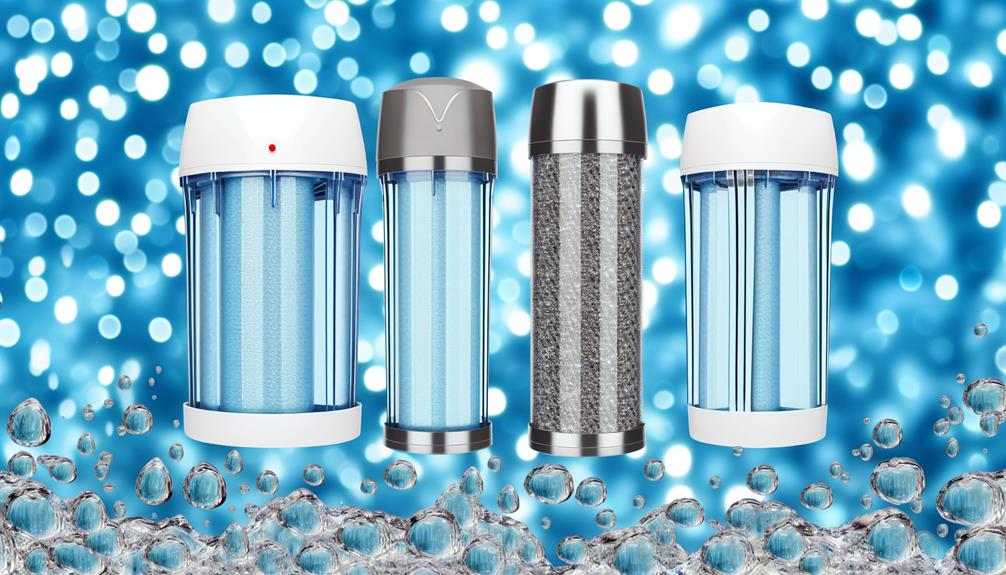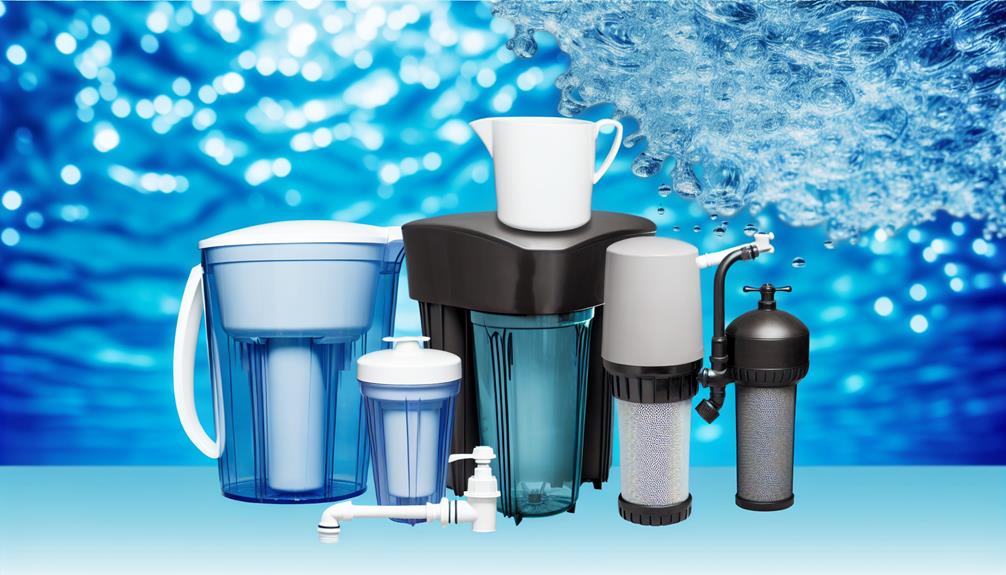As you navigate through the complexities of industrial water filtration, recall the tale of the ancient Sisyphus—endlessly pushing a boulder uphill. Much like his unyielding quest, the struggle to achieve pure water can seem a similar labor: persistent and fraught with challenges.
You're aware that various filtration technologies promise to strip water of unwelcome guests such as chemicals, heavy metals, and biological contaminants. Yet, you might wonder whether these systems truly accomplish what they claim.
In considering the intricacies of activated carbon, the precision of reverse osmosis, and the potency of UV light, you must ask yourself if these methods are thorough in their purification or if, like Sisyphus' stone, some pollutants evade capture and slip back into our water supply.
As you ponder the effectiveness of these systems, consider the implications for not just the quality of water, but the health of ecosystems and communities reliant on these industrial processes.
Understanding Contaminant Profiles
To effectively combat water contamination, it's crucial to recognize that contaminant profiles differ significantly, influenced by local geography, water sources, and specific industrial processes. Your understanding of this variability is key when selecting filtration methods for water treatment plants. The aim is to remove harmful substances and ensure Water Quality standards meet health and environmental requirements.
Tailored approaches are necessary because types of water contaminants range from minerals and microbes to complex chemical compounds. For instance, reverse osmosis systems are adept at reducing a broad spectrum of pollutants but may not remove PFAS—per- and polyfluoroalkyl substances—without additional, specialized filters. These emerging contaminants, alongside pharmaceutical residues, present new challenges for water supply management.
Regular assessments of your water supply are non-negotiable to keep pace with evolving contaminant profiles. Only with current, detailed data can you adapt water treatment processes to target specific contaminants effectively. Customization of filtration solutions isn't merely a best practice; it's essential. Without this precision, efforts to cleanse contaminants from water could fall short, leaving potentially dangerous substances unchecked.
Thus, the capacity to remove PFAS and other persistent pollutants hinges on informed, agile responses to the unique contaminant signatures of each water source.
Filtration Technologies Explained
Several filtration technologies, such as pipeline/basket strainers, automatic self-cleaning strainers, and ultraviolet purification systems, have been developed to enhance industrial water treatment by reducing contaminants and improving process efficiency. You'll find that each technology is designed to tackle specific contaminants and impurities.
For instance, activated carbon filters are a staple in Water Filtration Systems, known for their ability to remove organic compounds and chlorine. The carbon filters work by adsorbing these contaminants, effectively reducing taste and odor issues. Meanwhile, reverse osmosis systems use a semi-permeable membrane to block the passage of dissolved salts, microbes, and organic molecules. This process, pivotal in different filtration scenarios, is renowned for its proficiency in desalination and producing high-purity water.
Filtration technologies explained within industrial contexts often emphasize the role of bag filters and pipeline/basket strainers. These are instrumental in removing larger particles, thus protecting downstream equipment from clogging and wear. Moreover, ultraviolet purification steps in as a non-chemical approach to disinfect water by deactivating pathogenic microorganisms.
These treatment solutions aren't just about keeping your water clean; they're integral in sustaining the efficiency of industrial systems. They lower energy costs by facilitating water recycling and contribute to Zero Liquid Discharge (ZLD) objectives, thus easing the strain on freshwater resources.
Efficacy of Reverse Osmosis
Reverse osmosis stands out as a robust method for purifying water, effectively removing contaminants including PFAS and pharmaceutical residues to meet stringent quality standards. This process, called reverse osmosis, employs systems that use a semipermeable membrane to sift through a wide range of contaminants. Unlike other water filters, filtration systems that use reverse osmosis membranes have a remarkable ability to remove even the smallest of impurities, including some that other methods can't.
NSF/ANSI standards have been established to assure you that reverse osmosis systems are both effective and safe. These standards rigorously test different types of reverse osmosis systems to ensure they perform as advertised. Although reverse osmosis is a powerhouse when it comes to purifying water, it's crucial to understand its limitations. For instance, it may not completely remove chlorine, nitrate, or certain bacteria from water.
Bear in mind, reverse osmosis systems are often combined with other forms of treatment, such as carbon filters, to enhance their ability to remove a broader spectrum of contaminants. Through such combinations, reverse osmosis can offer a comprehensive solution for a multitude of water impurities.
Benefits of Advanced Oxidation
While reverse osmosis systems excel in purifying water, advanced oxidation processes expand the scope of contaminant removal, addressing a broader range of pollutants with high efficiency. These cutting-edge systems in environmental engineering harness powerful reactions to break down harmful contaminants that traditional methods like reverse osmosis and activated carbon mightn't fully tackle.
Consider these key benefits of advanced oxidation in water treatment:
- Broad-spectrum efficacy: Targets and degrades a range of stubborn organic compounds and polyfluoroalkyl substances.
- Adaptability: Can be customized to address specific industrial processes and pollutant profiles.
- Efficiency: Rapidly breaks down chemicals commonly resistant to other forms of treatment.
- Environmental benefits: Reduces the potential for harmful byproduct formation.
- Complementarity: Works in conjunction with other systems, like reverse osmosis, for a multi-barrier approach.
Advanced oxidation stands out for its ability to confront complex water treatment challenges. It's particularly adept at neutralizing persistent organic compounds and chemicals like polyfluoroalkyl substances.
These processes are integral to modern industrial processes, ensuring that water isn't only safe for use but also meets stringent environmental standards. With advanced oxidation, you're leveraging the forefront of technology to ensure the purity of water in the most challenging contexts.
Assessing Filtration System Performance
Evaluating the performance of industrial water filtration systems is crucial to ensure they effectively remove contaminants, including persistent substances like PFAS and pharmaceuticals. You must conduct regular performance testing, focusing on the system's efficiency in eliminating these specific contaminants. Systems are often used in conjunction with activated carbon or reverse osmosis processes, which target a wide array of impurities.
To guarantee that filters remove contaminants to the expected standards, monitor the filtration system performance against extreme weather events that may compromise water treatment quality. It's also important to account for aging infrastructure, like lead pipes, which can affect the system's efficiency. Through diligent observation, you'll know when filter changes are necessary to maintain optimal performance.
Furthermore, you're responsible for ensuring that the system complies with state and federal water safety standards. This involves a detailed understanding of the types of PFAS present in the water and the specific industrial water filtration technologies required to address them. By maintaining an evidence-based, analytical approach to assessing filtration system performance, you can provide reassurances that the industrial water filtration systems in use are up to the task of providing clean, safe water.

